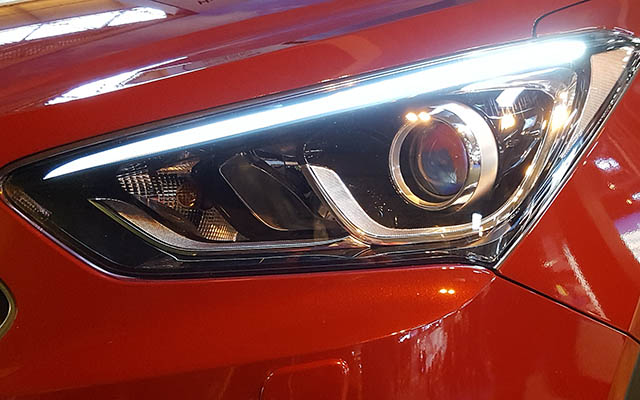OTTAWA – Canada is becoming an increasingly important export market for U.S.-based OEMs, with American-made cars, SUVs and light trucks worth $17.2 billion sold north of the border in 2022, according to federal government figures. That is up from $14.2 billion in 2021 and higher than pre-COVID-19 sales – $14.6 billion in 2018 and $13.8 billion in 2019.
A U.S. International Trade Admin. (ITA) briefing note stresses the opportunities for U.S. automakers, saying as regards Canadian import markets, automotive is the “best prospect industry sector for this country.
“Imports represent approximately three-quarters of (Canada’s) new-vehicles market,” the ITA says.
Generating figures from Canadian government databases, Wards research shows sales of U.S.-made heavy trucks are also robust in Canada: $14.5 billion in 2022, up from $12.8 billion in 2021, $13.4 billion in 2019 and $11.2 billion in 2018. Exports of buses and other public transport road vehicles are lower but significant – $455 million in 2022.
ITA data looks at the automotive sector as a whole and estimates total U.S. auto exports (including parts) to Canada in 2022 were worth $42.9 billion. A key benefit is the close U.S.-Canada regulatory relationship: “The Canadian regulatory environment for the automotive sector is harmonized to that of the United States, while over 90% of the two countries’ road safety regulations are harmonized,” the trade agency says.
With the two countries sharing a well-meshed auto manufacturing sector, parts trade remains healthy, with Canadian imports of U.S.-made automotive parts and components generating $13.1 billion in sales during 2022. These sales included transmissions, $1.6 billion; drive-axles with differential, $803 million; suspension systems, including shock absorbers, $1 billion; mufflers and exhaust pipes, $340 million; and clutches and parts, $288 million.
Of course, U.S.-made vehicles must comply with Canadian requirements. To comply with Canadian standards, vehicles must have a metric speedometer and daytime running lights (pictured, below), says a note from the federal Canadian Registrar of Imported Vehicles. They must also have child restraint tether anchorage hardware kit; a French-language supplementary restraint system label for airbags that require periodic maintenance; and an electronic immobilizer system that meets Canada Motor Vehicle Safety Standard 114.

But Brendan Sweeney, managing director of the Trillium Network for Advanced Manufacturing, which is raising public and investor awareness of Ontario's advanced manufacturing ecosystem, including for electric vehicles, says there is no emotional barrier to selling American autos in Canada.
The nationalistic preference for locally produced vehicles, such as exists in Germany, is absent in this market, Sweeney says. Indeed, he predicts U.S. exports of EVs to Canada will remain strong in the future.
“Every single EV in Canada, except some vans manufactured today, are made in South Korea, Japan and the United States, with a handful from Belgium and Austria,” he tells Wards. “Will we continue to import EVs? Absolutely. Will we export EVs? Absolutely. Will there be some made in Canada that are sold in Canada? Sure. But the majority of EVs that we drive will not be made in Canada. And the majority of EVs that we make in Canada will be exported. The relationship between consumption and production of vehicles is insignificant.
“We manufacture for export. Someone in Ontario doesn’t care where their vehicle is made,” Sweeney (pictured, below left) says. All Dodge, Honda, Toyota and Nissan pickup trucks driven in Canada are made outside the country, he notes. Only perhaps in communities near assembly plants, such as St Catharines, ON, for example, with its General Motors engine plant, might local preferences hold sway – but this is an American brand anyway.
 David Adams, president and CEO, Global Automakers of Canada, says most international automakers “look at Canada and the U.S. as one big market with respect to product planning.” With the North American Free Trade Agreement and its replacement, the U.S.-Mexico-Canada Agreement, “more manufacturing has shifted to North America to service that market, as opposed to vehicles being imported from overseas,” increasing the proportion of Canadian imports sourced from the U.S. and Mexico.
David Adams, president and CEO, Global Automakers of Canada, says most international automakers “look at Canada and the U.S. as one big market with respect to product planning.” With the North American Free Trade Agreement and its replacement, the U.S.-Mexico-Canada Agreement, “more manufacturing has shifted to North America to service that market, as opposed to vehicles being imported from overseas,” increasing the proportion of Canadian imports sourced from the U.S. and Mexico.
Adams adds that the five manufacturers in Canada are all subsidiaries of either American or Japanese companies, so what is built in North America by these companies is for the region’s entire market: “So, 85% of what is built in Canada (by any of the five) goes to the U.S. while Canada, in turn, imports about 85% of its sales from the U.S. and elsewhere.”
In Adams’ view, Honda and Toyota have perhaps done a better job at assessing their factories in Canada “and building models there that sell very well in Canada” – for instance SUVs “and key-segment passenger vehicles like the Honda Civic, which had been Canada’s best-selling car for 24 years up to last year.”
One element of the Canadian market considered by U.S.-based automakers to boost profits, however, is reducing trim levels. As a smaller market (40 million people in Canada, versus more than 335 million in the U.S.), “there might be a base level and a loaded level sold here, but two (or) three additional trim level variants (only) available in the U.S.”
Andrew King, managing partner at Canada’s DesRosiers Automotive Consultants, agrees that “where a vehicle is built in North America really isn’t an issue for consumers” in Canada. However, despite the integration of the U.S. and Canada’s auto industries, “most vehicle companies have separate sales teams and targets for Canada vs. U.S., as the two markets are very different,” he says, with vehicles sold in Canada “sometimes spec’d differently than U.S. ones.” Canadian models may have heated seats when U.S. versions do not, for instance.
Matt Blunt, president, American Automotive Policy Council, tells Wards: “Our member company products have always been popular with Canadian consumers. Given the requirements of the renegotiated USMCA, the United States has become an increasing portion of total North American production. This probably contributes to the increase in exports from the United States to Canada.”
[ZD1]Not understanding this. U.S.-made autos are sold in Canada. The lead of the story says as much. Maybe it should say, Of course, U.S. made vehicles must comply with some Canadian requirements.





